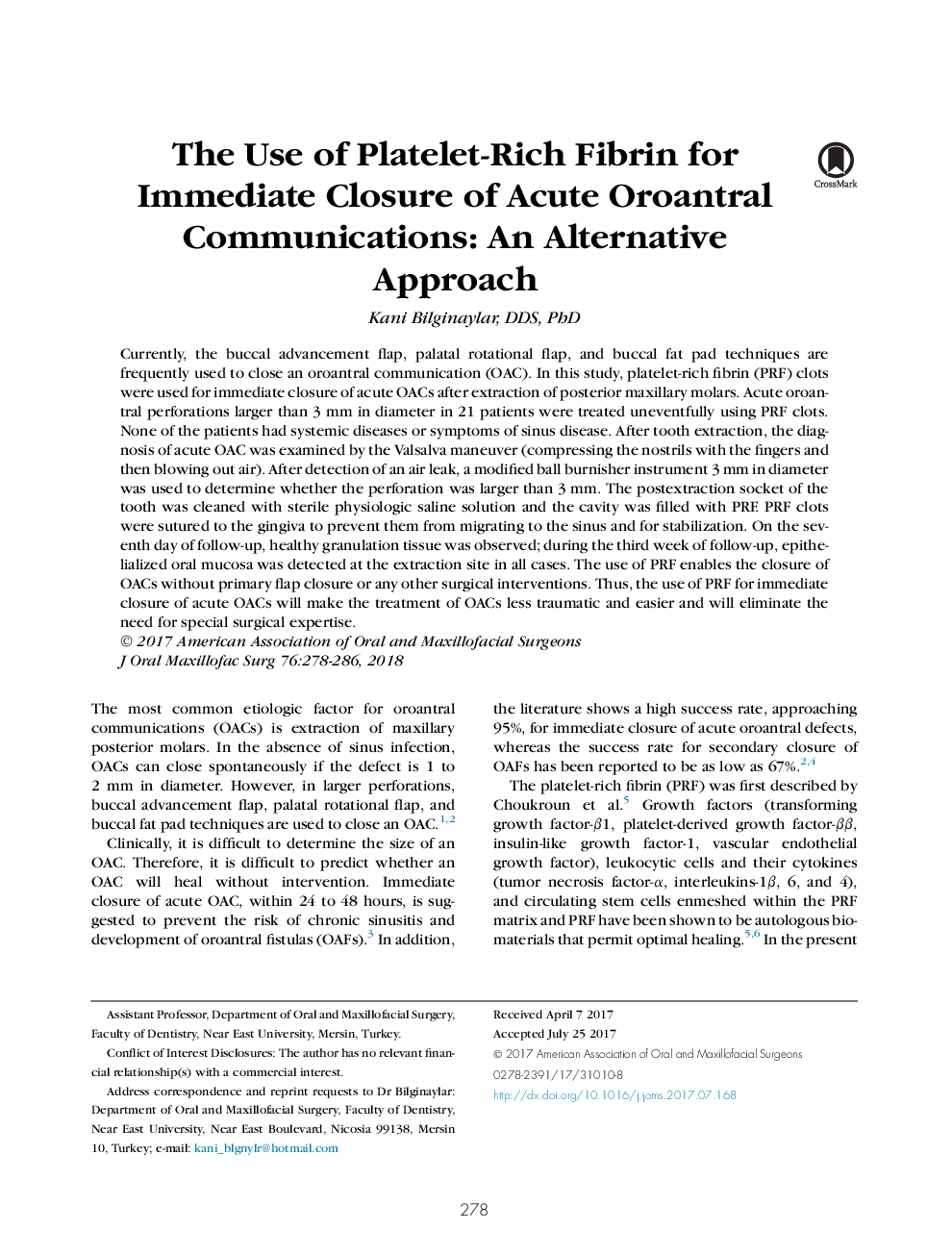| Article ID | Journal | Published Year | Pages | File Type |
|---|---|---|---|---|
| 8700394 | Journal of Oral and Maxillofacial Surgery | 2018 | 9 Pages |
Abstract
Currently, the buccal advancement flap, palatal rotational flap, and buccal fat pad techniques are frequently used to close an oroantral communication (OAC). In this study, platelet-rich fibrin (PRF) clots were used for immediate closure of acute OACs after extraction of posterior maxillary molars. Acute oroantral perforations larger than 3Â mm in diameter in 21 patients were treated uneventfully using PRF clots. None of the patients had systemic diseases or symptoms of sinus disease. After tooth extraction, the diagnosis of acute OAC was examined by the Valsalva maneuver (compressing the nostrils with the fingers and then blowing out air). After detection of an air leak, a modified ball burnisher instrument 3Â mm in diameter was used to determine whether the perforation was larger than 3Â mm. The postextraction socket of the tooth was cleaned with sterile physiologic saline solution and the cavity was filled with PRF. PRF clots were sutured to the gingiva to prevent them from migrating to the sinus and for stabilization. On the seventh day of follow-up, healthy granulation tissue was observed; during the third week of follow-up, epithelialized oral mucosa was detected at the extraction site in all cases. The use of PRF enables the closure of OACs without primary flap closure or any other surgical interventions. Thus, the use of PRF for immediate closure of acute OACs will make the treatment of OACs less traumatic and easier and will eliminate the need for special surgical expertise.
Related Topics
Health Sciences
Medicine and Dentistry
Dentistry, Oral Surgery and Medicine
Authors
Kani DDS, PhD,
